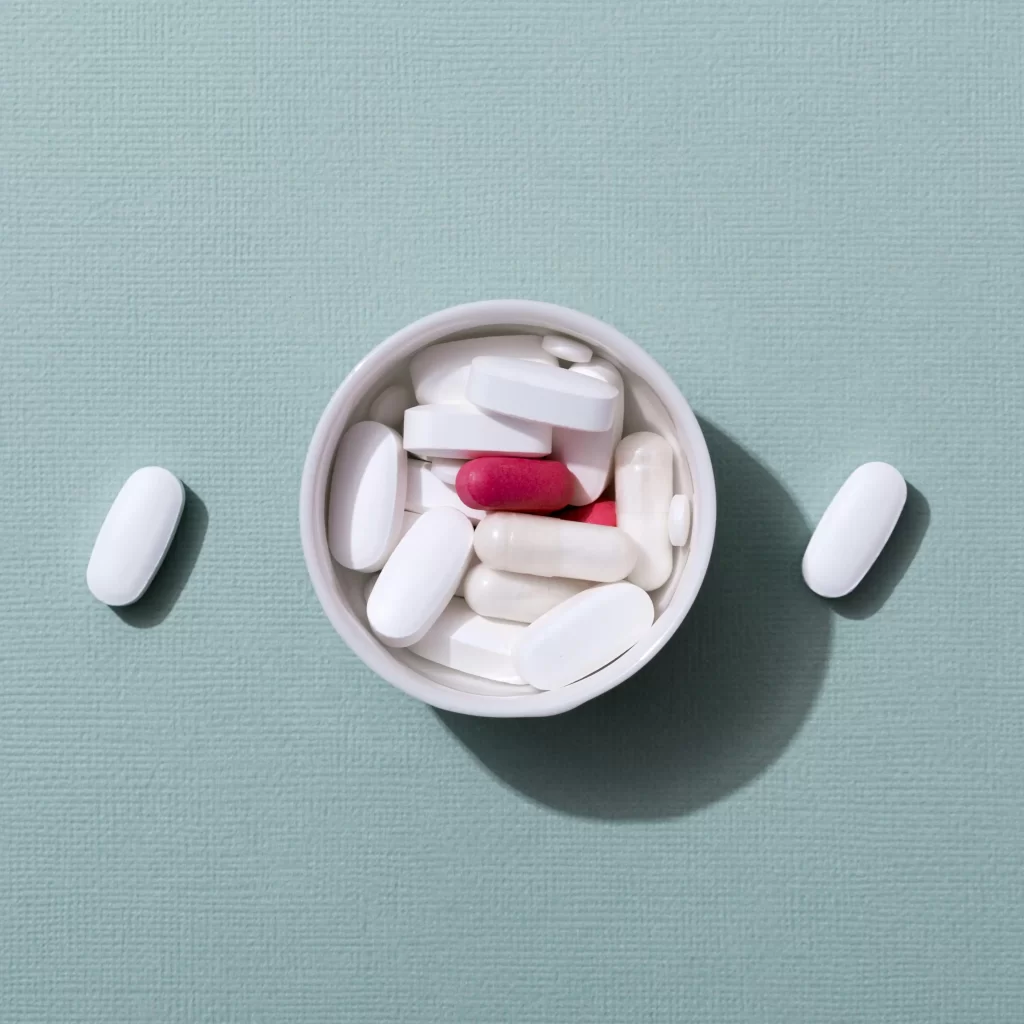Duloxetine
Unlike selective serotonin reuptake inhibitor (SSRI) antidepressants like fluoxetine, which work primarily on serotonin, duloxetine acts on other serotonins. Duloxetine works through two different mechanisms. It presumably functions by modifying the brain’s neurotransmission of two essential neurotransmitters, norepinephrine and serotonin. One neuron releases neurotransmitter into the space between it and the subsequent neuron during neurotransmission. Neurotransmitters interact with receptors, which are particular locations on the surface membrane of neurons. The chemical signal is then converted into an electrical impulse, which passes through the cell and releases more neurotransmitters.
this neurotransmission process is repeated. Following the release of neurotransmitters and the start of neurotransmission, after a chemical signal is delivered to neurons, a process known as reuptake returns the neurotransmitters to the brain’s cells. By preventing the neurotransmitters from returning to their original locations within the neurons, were produced, the neurotransmitter’s effects may be amplified by the antidepressant.
Duloxetine primarily works as an antidepressant by preventing serotonin and norepinephrine from being reabsorbed. While this activity is comparable to that of SSRIs, Duloxetine differs significantly in that it also blocks the reuptake of adrenaline.
Duloxetine is a serotonin-norepinephrine reuptake inhibitor (SNRI) for this reason. Depression as well as Abnormal low levels of serotonin, norepinephrine, or both may be the cause of various mental diseases. Affected parts of the brain may undergo alterations as a result of this condition. The antidepressant’s improvement of neurotransmission returns damaged brain regions to normal function, which lessens the illness’s symptoms.
The U.S. Food and Drug Administration (FDA) first licensed Duloxetine for the treatment of significant depression as well as the control of pain and unusual sensations brought on by diabetic peripheral neuropathy (DPN), a consequence of diabetes mellitus. It is now authorized for the management of generalized anxiety problem as well as fibromyalgia, a disease characterized by weariness, persistent widespread pain, and touch sensitivity. The term “labeled use” refers to the administration of a drug for its authorized uses.
Information about Dosing
Duloxetine is often started for serious depression at a total daily dosage of 40–60 mg, given in split doses (20–30 mg twice a day). The best dosage was generally determined to be 60 mg per day. Some people may require greater dosages (90–120 mg/day in split doses) to address their pain symptoms. It is not advised to use the medicine at dosages more than 120 mg/day as the safety and efficacy of such dosages have not been sufficiently studied.
Typical Side Effects
Duloxetine side effects that are most frequently mentioned include nausea, vomiting, constipation, dry mouth, dizziness, increased perspiration (including night sweats), exhaustion, and sleeplessness. Usually, side effects happen quickly after beginning the medicine or when the dosage is increased. The doctor may lower the dosage if side effects become too much to handle so the patient may get used to the drug before gradually raising it again.
Duloxetine causes sexual adverse effects, including as delayed ejaculation in males and delayed orgasm in women, at a rate similar to that of the SNRI antidepressant Effexor (venlafaxine), but less frequently than the 50%–60% incidence associated with SSRIs.
It doesn’t seem that Duloxetine causes weight gain. Patients on Duloxetine acquired less weight in clinical studies than those on placebo (sugar pills).
Adverse Events and Safety Measures
- Individuals using Duloxetine at recommended doses may have moderate hypertension, or elevated blood pressure. The majority of people only have a little rise in blood pressure and are not need to stop taking Duloxetine due to hypertension. Lowering the dose usually returns blood pressure to normal. As a precaution, the patient’s blood pressure should be taken
- before beginning Duloxetine and on a regular basis while on the medication, particularly for those who already have high blood pressure or a history of heart problems.
Increased intraocular pressure in uncontrolled narrow-angle glaucoma can be made worse by Duloxetine. Therefore, individuals with poorly managed narrow-angle glaucoma should not use Duloxetine.
Duloxetine withdrawal symptoms, such as lightheadedness, nausea, headaches, vomiting, irritability, and nightmares, can occur with an abrupt stop. It is possible to prevent withdrawal symptoms by gradually reducing the dosage before stopping it. The pharmacological activity of Duloxetine may result in hesitation and trouble urinating. Males who have an enlarged prostate may be more vulnerable to this negative outcome.
Utilization during pregnancy and nursing: Category C
Women have not been evaluated for the safety of Duloxetine during pregnancy. It is uncertain how the drug will affect the growing fetus. On the other hand, infants exposed to antidepressants like Duloxetine and Late in the third trimester, Duloxetine (duloxetine) SSRIs caused problems that necessitated extended hospital stays, respiratory assistance as well as tube feeding. Women who are or may become pregnant should talk to their physician about this. When they stop taking their antidepressant, some women may have a relapse of depression. In certain situations, it can be essential to resume taking the medicine or look for a different kind of drug or treatment.
Duloxetine should not be given to nursing moms since minute quantities might enter the breast milk and enter the baby’s system. Breastfeeding should not begin if quitting the antidepressant is not an option ought to be stopped.
Potential Interactions with Drugs
Like many other drugs, Duloxetine is processed by the liver. When certain drugs are used together, there may be negative drug interactions because one medication may change the other’s blood levels.
Thankfully, there aren’t many documented medication interactions with Duloxetine. When coupled with Duloxetine, other drugs, including herbal supplements like St. John’s wort, that increase serotonin may cause an excess of that neurotransmitter and create a hazardous state called serotonin syndrome. Serotonin syndrome manifests first as tremors, flushing, involuntary muscular jerks, restlessness, and bewilderment. If the drug is not discontinued, the patient can experience more
- dangerous side effects that include red blood cell degeneration, muscular abnormalities, high fevers, respiratory issues, coagulation issues, and the potential for abrupt renal failure. Individuals using Duloxetine ought to
- Fluvoxamine, or Luvox The selective serotonin reuptake inhibitor (SSRI) luvox may prevent Duloxetine from being metabolized. Duloxetine levels may become noticeably high as a result, which might intensify negative side effects. Treatment should start as soon as a patient’s prescription is changed from Luvox to Duloxetine. with a lower-than-normal Duloxetine dose, as substantial Luvox levels can still be present within the body.
- Prozac (fluoxetine) and Paxil (paroxetine) Two SSRIs that are strong inhibitors of the enzyme that breaks down Duloxetine include Paxil and Prozac. This may lead to noticeably higher Duloxetine levels, which might exacerbate side effects. When a person is When taking Duloxetine instead of Paxil or Prozac, the course of treatment should start with a lower-than-normal Duloxetine dosage, as the body may still have detectable amounts of the SSRI.
Cimetidine, or Tagamet, Tagamet may increase Duloxetine levels and block its metabolism, which might exacerbate its negative side effects.
Ciprofloxacin, or Cipro and other antibiotics in this family may prevent Duloxetine from being metabolized and increase its levels, perhaps raising the possibility of unfavorable side effects.
Keep an eye out for any potential serotonin syndrome symptoms, which call for stopping serotonin-boosting drugs and seeking rapid medical assistance.
- Monoamine oxidase inhibitors (MAOIs), a class of antidepressants, should not be used with Duloxetine, since the combination can possibly result in a hazardous response characterized by increased blood pressure, raised temperature, and severe excitement and agitation. Patients ought to speak with their doctor or consult a pharmacist before beginning any new prescription regimen that includes Duloxetine, including over-the-counter drugs and herbal supplements.
- Alcohol should be avoided or used in moderation by Duloxetine users. This is because the combination could make depression worse. Smoking can drastically lower Duloxetine serum levels by up to one-third. Smokers on Duloxetine may need to take larger dosages in order to reach therapeutic levels.
Overdosing
Duloxetine overdose is a relatively new clinical condition, and no cases of fatal acute overdose have been documented. Duloxetine overdoses should be far less hazardous than those involving tricyclic and MAOI antidepressants, especially when taken by itself. On the other hand, multiple drug overdoses are common, and the combination of drugs may result in more significant side effects. Duloxetine and central nervous system depressants (alcohol, drugs, benzodiazepines) together can be fatal, with respiratory depression being the typical cause of death.
Treating any suspected overdose as an emergency is imperative. The individual has to be brought to the emergency space for care and observation. It is advisable to include both the prescription bottle of medication and any other medication suspected in the overdose, since the information on the label can be useful in helping the treating physician figure out how many tablets the patient has taken.
Precaution Points to Remember
Major depressive disorder may often be effectively treated with medication, psychotherapy, or both. For the treatment of moderate to severe depression, the combination of psychotherapy and antidepressants is particularly successful. Medication enhances mood, energy, sleep, and appetite, while therapy helps people develop coping mechanisms, addresses any potential underlying problems and enhances behavior and mental habits. Additionally, Duloxetine may be quite helpful in managing anxiety.
60% to 70% of those who take antidepressants on their own report feeling better overall. The majority of people do not notice noticeable advantages from their antidepressants until after 3–4 weeks, and it can occasionally take up to 8 weeks for the medicine to have its full effects. A small percentage of people may notice some improvement before the end of the first week. Therefore, it is crucial that patients take their antidepressant for the whole recommended amount of time and that they do not give up and stop taking it too soon if they do not start feeling better right away.
Antidepressants have been shown in short-term trials to raise the likelihood of suicidal thoughts and actions in kids and teenagers suffering from severe depressive illness and other mental health issues. When beginning antidepressant therapy in children and adolescents, the FDA mandates that the prescriber disclose this risk to the patient. As stated by FDA research, there is an age-related risk of suicide thoughts and actions when using antidepressants. This phenomenon is more likely to manifest early in the course of and is more common in the younger population.
Antidepressant use did not seem to be associated with a higher incidence of suicidality in people over the age of 24, as compared to placebo use. The results demonstrated that antidepressants have a “Protective effect” against acts and ideas of suicide. According to other research, there is a decrease in suicide rates in communities where a higher proportion of the population uses antidepressants.
- Suicide risk is a part of depression and may not go away until the patient responds to therapy. Upon initiating or modifying antidepressant therapy, the individual particularly if they are a child or adolescent should have continuously monitored for worsening symptoms of depression, and any concerns should be reported to the doctor by the family or caregiver.
- Caution: If you are experiencing suicidal thoughts, please notify your doctor or a family member right away. Inform your Whenever your depressed symptoms increase or you feel like you can’t manage suicide thoughts or desires, see a psychiatrist or your family doctor.
- Avoid stopping Duloxetine suddenly. It is best to reduce your dosage gradually in order to avoid the symptoms of abrupt withdrawal.
- If you forget to take a dosage, catch up by taking it two to three hours later than planned. If it’s near, Skip the missed dosage and resume your usual dosing regimen for the next scheduled dose. Never take two doses at once.
- Duloxetine may be taken with or without food. It should be eaten whole, without being chewed, crushed, or opened to sprinkle food within the capsule.
- Keep the medication out of direct sunlight and dampness, in the light-resistant container that came with it. Your drug may break down more quickly in hot and humid environments, losing its therapeutic benefits.
- Make sure kids can’t get to your medication.




